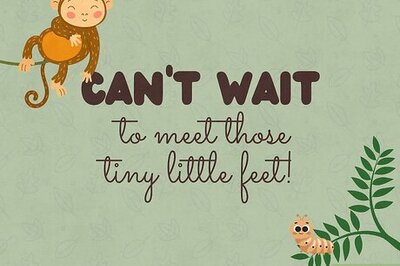
views
BANGALORE: Noor Inayat Khan, a descendant of Tipu Sultan was a secret agent in World War II. She was infiltrated into France by the Special Operations Executive, Winston Churchill’s secret organisation. Noor, the first female radio operator to be sent to German-occupied Paris was eventually captured and executed by an SS officer on September 13, 1944 at Dachau Concentration Camp. Her father was Indian and her mother was American. Shrabani Basu, London-based author and journalist was captivated by the story of this young woman. Basu hence wrote the book, Spy Princess – The Life of Noor Inayat Khan. But now, she is raising funds to install a permanent memorial in Noor’s honour in London, after the campaign was tabled in the House of Commons on June 22, 2010 by MP Valarie Vaz and signed by 34 MPs. We catch up with the author who made a quick pit stop at British Library in Bangalore.Noor Inayat Khan is a descendent of Tipu Sultan. Even in Bangalore, where Tipu had a lot of influence, people seem to know very little about her. Are we forgetting our heroes?Noor is the ‘great great great great’ granddaughter of Tipu Sultan. When the book came out, she came back to the picture. But she seems to be forgotten even in the UK where she lived – maybe because of her Indian origin.What made you write a book about Noor. Was it just a topic that you stumbled upon during research or was it something that you wanted to write about for a long time?I heard about her in 1995. I came across an article in the newspaper with an old picture of hers. How was she killed, how did she end up in Dachau concentration camp – all these questions came to me. There were no answers. I knew I wanted to find out. At that time, I was still working on my curry book. I had to finish that and revise it for my UK edition. I finished all my commitments and started writing the book in 2003. The book is not that new. I am in India because of the memorial that I am planning for her.Tell us about the memorial.The idea came from my readers. When the book was published, I got lots of letters thanking me for the book. Then they said they need a memorial for her. One gentlemen said he would even appeal to the Prime Minister. I thought a memorial might be too much, and a blue plaque would be great – everyone has a blue plaque. But it was rejected on a very small technical ground. That’s when I realised we needed to do something. I started lobbying with the MPs and with the members of the House of Lords. I hosted a tea party in which I called all the big names from Asia – Shami Chakrabarti, Gurinder Chadha and so on. They all signed, and now we have got permission to have her public sculpture in Gordon Square, the heart of London, close to where the Prince of Wales unveiled Rabindranath Tagore’s bust. Our target is to raise 100,000 pounds. We have already raised about 40,000 pounds. We are campaigning everywhere and we have just started in India. All people need to do is get on the website and pay. Nobody is asking for large amounts, but we are asking for involvement. We will bring out a booklet at the unveiling and the names of all the donors and the countries will be mentioned in it. Noor’s father was a Sufi preacher – pacifist. But what made Noor join the Women’s Auxiliary Air Force and join World War II? It goes against all pacifist principles.Noor and her brother made the decision to join the armed forces. Sufis are against war. True, she went against the Sufi order. But she didn’t like the suppression in France. Her father used to tell her that she had the blood of Tipu Sultan in her. She fought tooth and nail when she was captured. She made two escape attempts. She was kept in chains and beaten up every night. But she didn’t reveal the names of her colleagues. She was defiant till the end. The last word that she uttered before she was shot was ‘Liberte.’Do you think she was caught between two cultures – Indian and American, and joining the allied forces was her way to build a bridge between India and Britain? She was Indian at heart. But I feel she was Indian, American and French at the same time. She was a global woman. But her main aim was Indian freedom. She had decided that after the war, she would fight for the liberation of Indians. During the recruitment they even asked her whether she would side up with Indian leaders. She didn’t like that question. There is a lot of mystery surrounding her fiance. In your research could you dig deeper into that?It’s the second fiance that we are talking about here. We know nothing about him. For more information log onto www.noormemorial.org.




















Comments
0 comment